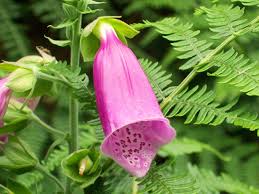Faery Plants
There are lots of reasons why a plant or tree might be a faery tree. Their multi-dimensional reality where mountains, waterfalls, and trees are doorways into the web of worlds they live in and travel through means what looks like an old tree here might be something else, or several something else's where ever they are.
In general (very general, many differing faery have very differing preferred habitat); fae love wildness, other small animals, butterflies and birds and plants that attract those are also likely to attract fae.
I never quite got a clear idea why and have been given many reasons over the years (none of which or all of which might be true).
They like to eat the same foods as some of these creatures. They like to eat some of these creatures. They like to hide in the flurry of golden dust and wings. They like to shapeshift into some of these animals. It's pretty.
There do seem to be plants that attract them, and plants (mostly trees) that they use as doorways.
Oak Trees
Elder trees (especially in flower)
Hawthorns
Blackthorns
Blackberry brairs
Gorse
Growing up plants like bluebells ( Hyacinthoides non-scrita, not Harebells) were known as faery (fairybells) and were full of faery spells and magick. Poisonous (tends to be a faery theme) and spectacular both close up (many a faery illustration show them wearing them as tiny hats) and as a whole mass of sweetly scented blue carpet in May, it is easy to see why these flowers have such a long history as a faery flower. Picking them in the U.K. is now illegal, which is no doubt faery approved as they don't like their plants disturbed. Noticeable blue and green together was seen as a faery colour before St Patrick adopted the blue.
Foxgloves were also known as a faery flower (it helps they tend to grown in the same places as bluebells, ferns and other faery plants. In our house the purple ones were considered the "proper" faery flowers with random white one having had their magick drawn from them. I have no knowledge if this is the cases but it was certainly the folklore at the farm.
Fearns (Bracken)
Bracken (as I have always known it) is an interesting plant. It is lush and green in gentle but tough leaves that animals don't like to eat, that ripple in spirals, that transforms into this strange golden, brown plant, often on mass, when the weather changes. It gives shelter to many small creatures and has huge amounts of lore. It is one of the few faery plants you could pick that didn't kill or give you bad luck.
Don't disturb faery flowers if you can help it. This is not some quaint superstition. Having had to help a friend deal with a distinctly unhappy bunch of faeries after some hapless human peed against their door tree (an huge old oak), they are very creative when it comes to vengeance and "stupid humans".
Growing up plants like bluebells ( Hyacinthoides non-scrita, not Harebells) were known as faery (fairybells) and were full of faery spells and magick. Poisonous (tends to be a faery theme) and spectacular both close up (many a faery illustration show them wearing them as tiny hats) and as a whole mass of sweetly scented blue carpet in May, it is easy to see why these flowers have such a long history as a faery flower. Picking them in the U.K. is now illegal, which is no doubt faery approved as they don't like their plants disturbed. Noticeable blue and green together was seen as a faery colour before St Patrick adopted the blue.
Foxgloves were also known as a faery flower (it helps they tend to grown in the same places as bluebells, ferns and other faery plants. In our house the purple ones were considered the "proper" faery flowers with random white one having had their magick drawn from them. I have no knowledge if this is the cases but it was certainly the folklore at the farm.
Fearns (Bracken)
Bracken (as I have always known it) is an interesting plant. It is lush and green in gentle but tough leaves that animals don't like to eat, that ripple in spirals, that transforms into this strange golden, brown plant, often on mass, when the weather changes. It gives shelter to many small creatures and has huge amounts of lore. It is one of the few faery plants you could pick that didn't kill or give you bad luck.
Don't disturb faery flowers if you can help it. This is not some quaint superstition. Having had to help a friend deal with a distinctly unhappy bunch of faeries after some hapless human peed against their door tree (an huge old oak), they are very creative when it comes to vengeance and "stupid humans".




No comments:
Post a Comment